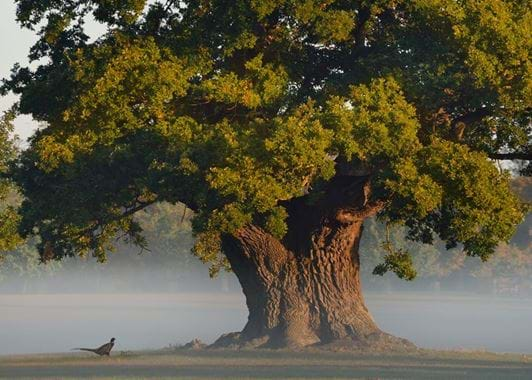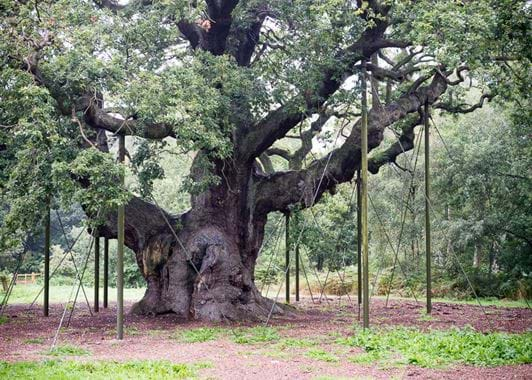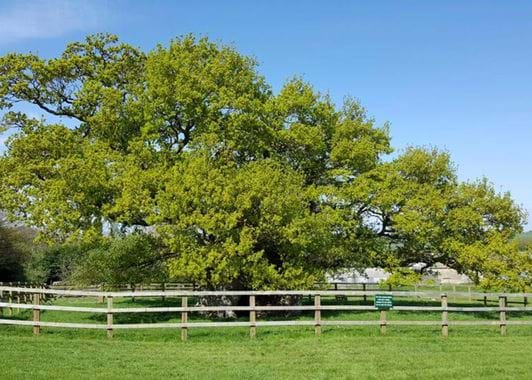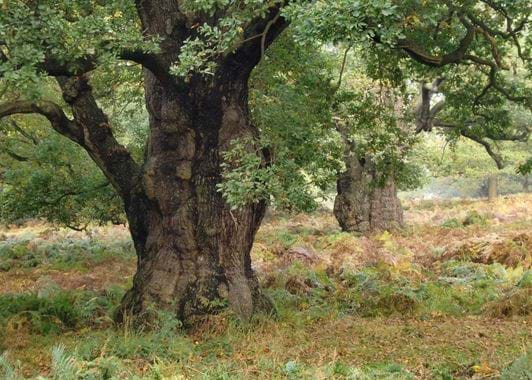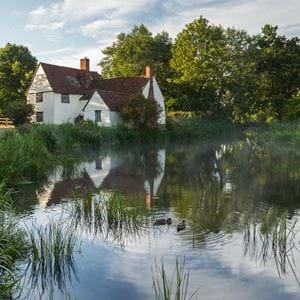England’s ancient oaks
England’s ancient oaks
As part of Blenheim Palace’s Festival of Literature, Film and Music, we went along to listen to Aljos Farjon’s talk on the ancient oaks that fill the English landscape.
The oak tree is very close to our hearts at Neptune. It’s the tree that we look to the most when making our furniture, and is the timber we use on any piece that’s not painted. We turn to oak, not just because it’s strong, beautiful and easy to work with, but also because of its heritage. So, when we heard that world-renowned Dutch botanist Aljos Farjon would be giving a talk on his new book, Ancient Oaks in the English Landscape, we wanted to know more. The setting, Blenheim Palace, felt perfectly fitting, as it’s where Farjon recently discovered the largest collection of ancient oaks in Europe.
It seems that one of the reasons the oak feels so quintessentially English, is that there are more ancient oaks in this country than in the rest of Europe (there are 115 in England that are wider than nine metres in circumference, compared to just 96 across the whole of the other European countries put together). The effects of the world wars and the long-term use of plantation forestry (the planting of fast-growing trees at the expense of slow-growing oak) in Europe are the main reasons for this.
But what exactly do we mean by ancient oaks? Just how old they are is hard to tell, although a tree is generally classed as ancient when it appears to have entered the final stage of its life, which for an oak tree is when it’s at least 400 years old. The usual method of determining a tree’s age – by counting its rings – doesn’t work as most are largely hollow, caused by a fungus called Fistulina hepatica. (Surprisingly though, these oak trees often continue to live long after their trunks have been hollowed.) The other method of calculating age is to measure the tree’s circumference, work out its radius and compare this to the average annual growth of an oak tree. It’s a method that can’t be completely relied on though, because growth speed can vary, as proved by the Major Oak in Sherwood Forest, which has been measured regularly since 1790. The other problem with measuring an ancient oak is that many have become divided into several trunks at the base.
Finding these oaks is less difficult, because there are many places that, thanks to their history, have held onto their ancient trees. The most important of these are our medieval deer parks. During the 13th century, it’s possible there were more than 2,500 of these dotted around the country – every nobleman wanted at least one. They were used to keep fallow deer, and the trees provided the herds with an important source of food and shelter. There aren’t nearly so many medieval deer parks in England today, but enough have remained to protect some of the oaks that have been growing there for centuries. They now account for 34.5% of England’s ancient oaks (with a further 13% in Tudor deer parks).
Outside of these parks, most other ancient oaks are found in either royal forests, wooded commons or the grounds of manor houses. Royal forests, such as Sherwood Forest, were once mostly uncultivated areas of pastureland (the word ‘forest’ once simply meant an area of land that the public were excluded from and, in fact, has nothing to do with trees), used by the king for hunting. Very few remain now, and those that do are often much more heavily planted, with their oak trees cut down or at risk from overcrowding. Only 20 of the remaining 44 royal forests are home to ancient oaks, and are where just 7.3% (and a further 4.6% in chases – areas given to noblemen for hunting) of the current population grow.
Wooded commons, on the other hand, were generally areas that the public did have access to. As a result, the trees here are often pollarded – cut off from the top to provide a source of timber – and so many haven’t survived due to overuse. Those that are still standing can be recognised by their short trunks that support a mass of larger branches above (as opposed to ‘maiden’ oaks – trees that weren’t pollarded and have a normal arrangement of branches around a tall, central trunk). Just as in deer parks, the trees here were also used as shelter for animals, this time for grazing livestock, so, apart from the pollarding, the trees were left to grow. Wooded commons are now home to 6.5% of our ancient oaks.
Many of the remaining trees – 19% in fact – can be found in the grounds and estates of manor houses built before 1600. In many cases, it’s continued private ownership that has ensured the survival of these trees.
Protecting our ancient oaks
Oak trees support more life than any other species. They’re especially important to invertebrates and epiphytes (mosses, lichens, ferns and fungi), which in turn feed birds and other animals. It’s one of the reasons that the conservation of our ancient oaks is so important. The other, of course, is their historical importance; in Farjon’s words, they’re “monuments to our past”.
Sadly, they’re still threatened. Since the early 20th century, the planting of fast-growing forests to provide timber has been one of the biggest causes for concern. Recently though, there’s been a shift in woodland management towards preserving them, now that we better understand their importance. Nowadays, ploughing too close to their roots and keeping livestock nearby are causing a great deal of damage, as are vandalism and neglect (especially of pollarded trees, which must be continually managed so they don’t become too top heavy).
Fortunately, there are a number of people and organisations, chiefly The Woodland Trust, that are campaigning and educating on behalf of these oaks. And, at the time of his talk, Farjon was soon to advise a House of Lords committee on how best to protect them.
The ancient oaks
If you’d like to see these ancient oaks for yourself (and there really is nothing like standing beneath one in person), we’ve gathered together some of the best places to head to, as well as some of the most notable trees.
Blenheim Palace, Oxfordshire
During his research, Aljos Farjon discovered Europe’s largest collection of ancient oaks in Blenheim Palace’s grounds, including the King Oak which is believed to be over 1,000 years old. Originally created as a deer park by King Henry I, it’s one of the rare instances of a landscape altered by Capability Brown where the oaks were largely left in place. Although the area they’re largely found in, High Park, is now privately owned, the trees can still be seen from the perimeter walk.
Sherwood Forest, Nottinghamshire
One of the best well-known of the royal forests, Sherwood Forest was once much larger and covered a fifth of Nottinghamshire. It’s home to the Major Oak, which has become associated with the legend of Robin Hood. Supposedly he hid in its branches from the Sheriff of Nottingham, even though the tree would’ve been just a sapling at the time...
Richmond Park, London
Although not a medieval deer park (it was created by King Charles I from common land), Richmond Park is a good example of how the landscape of one might’ve looked: open pastureland dotted with trees. It’s home to a great number of ancient trees, not just oaks, including the Royal Oak which is estimated to be around 750 years old. You can find it standing near to Pen Ponds.
Savernake Forest, Wiltshire
This Anglo-Saxon forest near Marlborough became a royal forest when it passed to the Normans after 1066. Today, it’s privately owned by the Earl of Cardigan which has saved it from over planting. Its most famous tree is the Big Belly Oak, which has a girth of over 11 metres and can be seen just off the A346.
The Bowthorpe Oak, Lincolnshire
Sat in a paddock on a working farm, The Bowthorpe Oak is England’s widest pedunculate oak (one of our two native species, alongside the English oak), measuring 13.3 metres, and is also completely hollow. At weekends, it can be viewed for just a small fee payable to the farmer.
Old Man of Calke, Derbyshire
This tree, reckoned to be more than 1,000 years old, can be found in the National Trust owned Calke Park. Its name was chosen through a competition, held when the site became a National Nature Reserve in 2006.
Aljos Farjon’s book, Ancient Oaks in the English Landscape, can be bought here.

